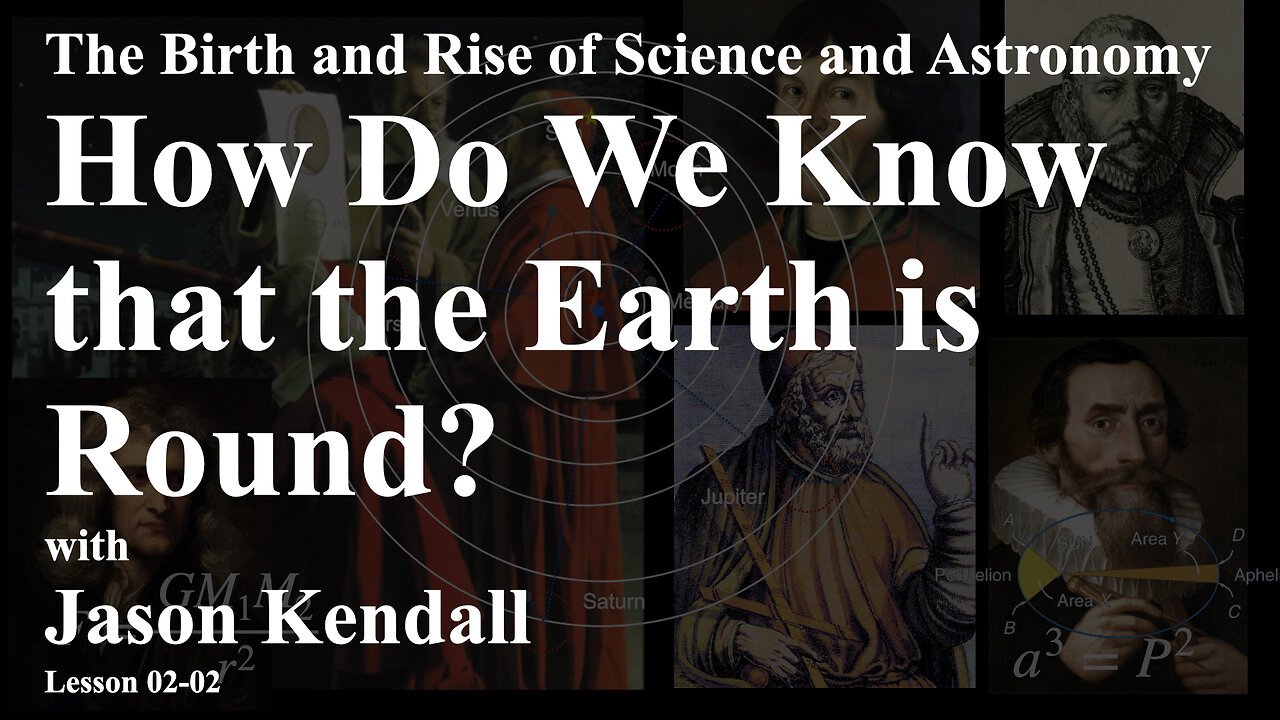Premium Only Content

The Historical and Scientific Journey to Measure the Distance from Earth to the Sun
To accurately determine the Earth-Sun distance, it is essential first to establish the size of the Earth. This pivotal discovery traces back to approximately 200 B.C., attributed to the Greek philosopher Eratosthenes in Alexandria, Egypt. Eratosthenes observed that at noon on the first day of summer in Syene (modern-day Aswan), the Sun was directly overhead, casting no shadow. Conversely, in Alexandria, the Sun cast a shadow due to its position at a slight angle. By measuring the angle of the shadow in Alexandria, which was approximately 7 degrees, and knowing the distance between Alexandria and Syene (approximately 5000 stadia or about 800 kilometers), Eratosthenes employed simple geometric calculations to estimate the Earth’s circumference to be around 40,000 kilometers, a figure remarkably close to the modern value. This measurement proved crucial for subsequent astronomical calculations. For instance, by observing the transit of Venus across the Sun from various locations on Earth, astronomers could utilize parallax to determine the Earth-Sun distance. Achieving these measurements necessitated the development of calculus, Isaac Newton’s laws of gravity, Johannes Kepler’s laws of planetary motion, and the heliocentric model supported by Galileo’s studies. Collectively, these advancements significantly enhanced our understanding of the cosmos and the Earth’s position within it.
-
 LIVE
LIVE
The Jimmy Dore Show
2 hours agoCandace Owens Faces “Credible” Assassination Threats! Massie CALLS OUT Israel-Epstein Connection!
10,439 watching -
 DVR
DVR
Barry Cunningham
1 hour agoMUST SEE: PAM BONDI AND KAROLINE LEAVITT MAKE REMARKS! | AND MORE NEWS!
41.4K3 -
 41:11
41:11
Donald Trump Jr.
20 hours agoMaking America Affordable Again, Interview with Economist Steve Moore | TRIGGERED Ep.294
98.7K87 -
 1:02:43
1:02:43
BonginoReport
3 hours agoThe Insane Proposal That Will Ruin Elections FOREVER - Nightly Scroll w/ Hayley Caronia (Ep.184)
24.7K27 -
 1:44:50
1:44:50
Mike Mac - Say Something
1 day agoSay Something Beyond W/MikeMac: DR. HEATH - Ep.15
2.09K -
 LIVE
LIVE
Quite Frankly
5 hours agoGrief & Gratitude, Pyretta Blaze, Crazy News | Megan Daubert 11/24/25
368 watching -
 LIVE
LIVE
The Mike Schwartz Show
6 hours agoTHE MIKE SCHWARTZ SHOW Evening Edtion 11-24-2025
3,351 watching -
 1:04:03
1:04:03
TheCrucible
4 hours agoThe Extravaganza! EP: 64 (11/24/25)
87.5K11 -
 1:19:32
1:19:32
Kim Iversen
3 hours agoIsrael Running The Dept Of Homeland Security Social?!?
29.9K61 -
 LIVE
LIVE
Akademiks
2 hours agoSheck Wes exposes Fake Industry. Future Not supportin his mans? D4VD had help w disposing his ex?
905 watching